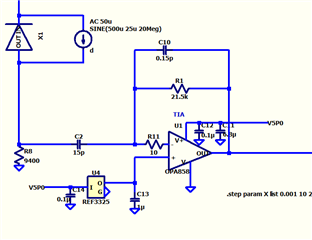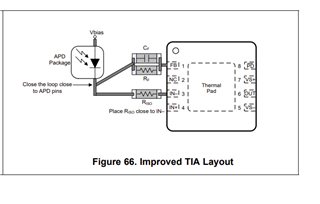I am planning to use OPA858 as the Transimpedance Amplifier for the following TIA circuit. C2, R8 are to AC couple the circuit: 
In the data sheet of OPA858, it recommends using this layout with Riso in order to reduce the resonance between the trace and the Transimpedance amplifier's internal capacitance. My question is with my R8 and C2, where should I close the feedback loop and where should I put my R8 and C2? In our application, we cannot put the C2 very close to the PD due to physical limitations. Our bandwidth of interest is 1-30 Mhz.


